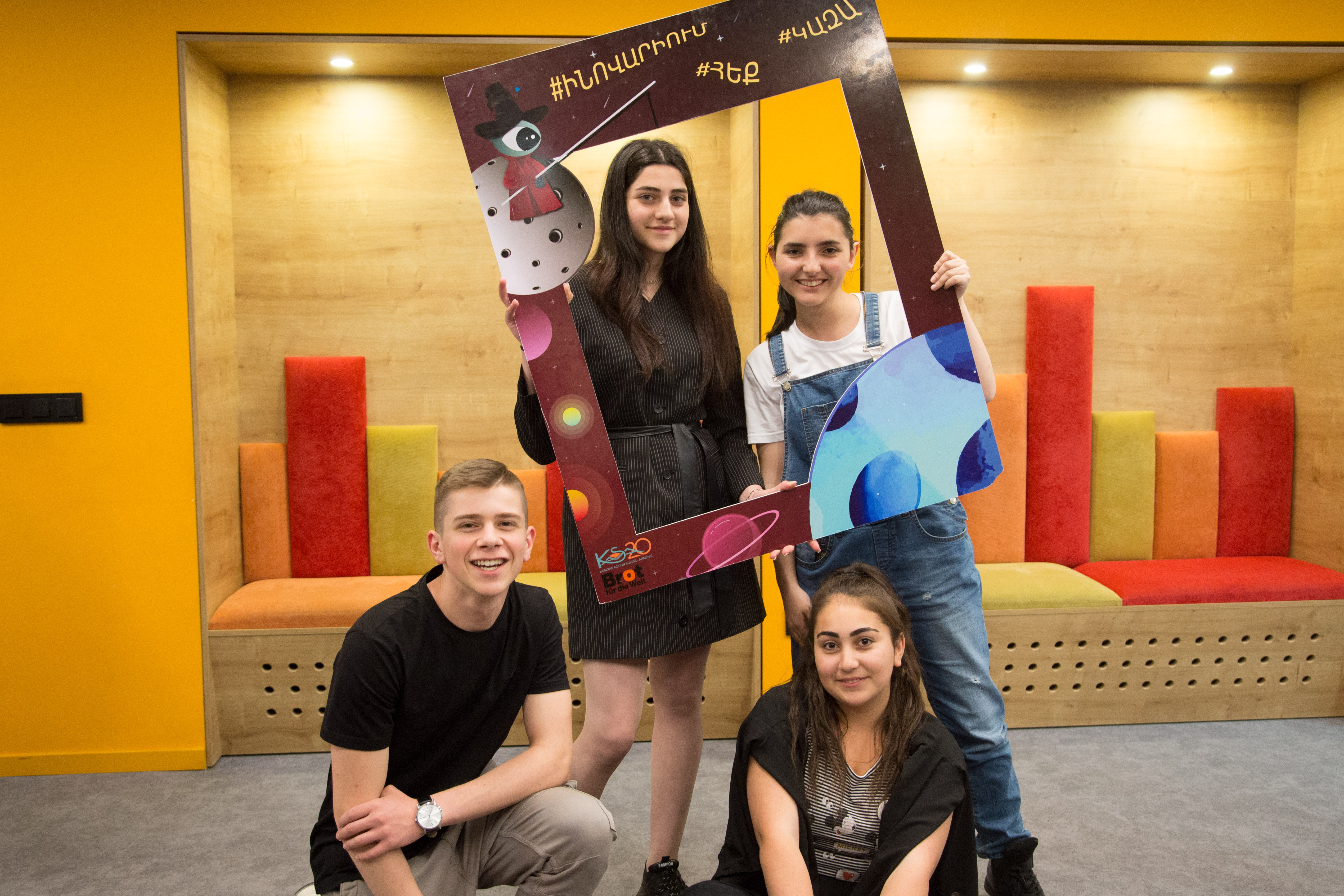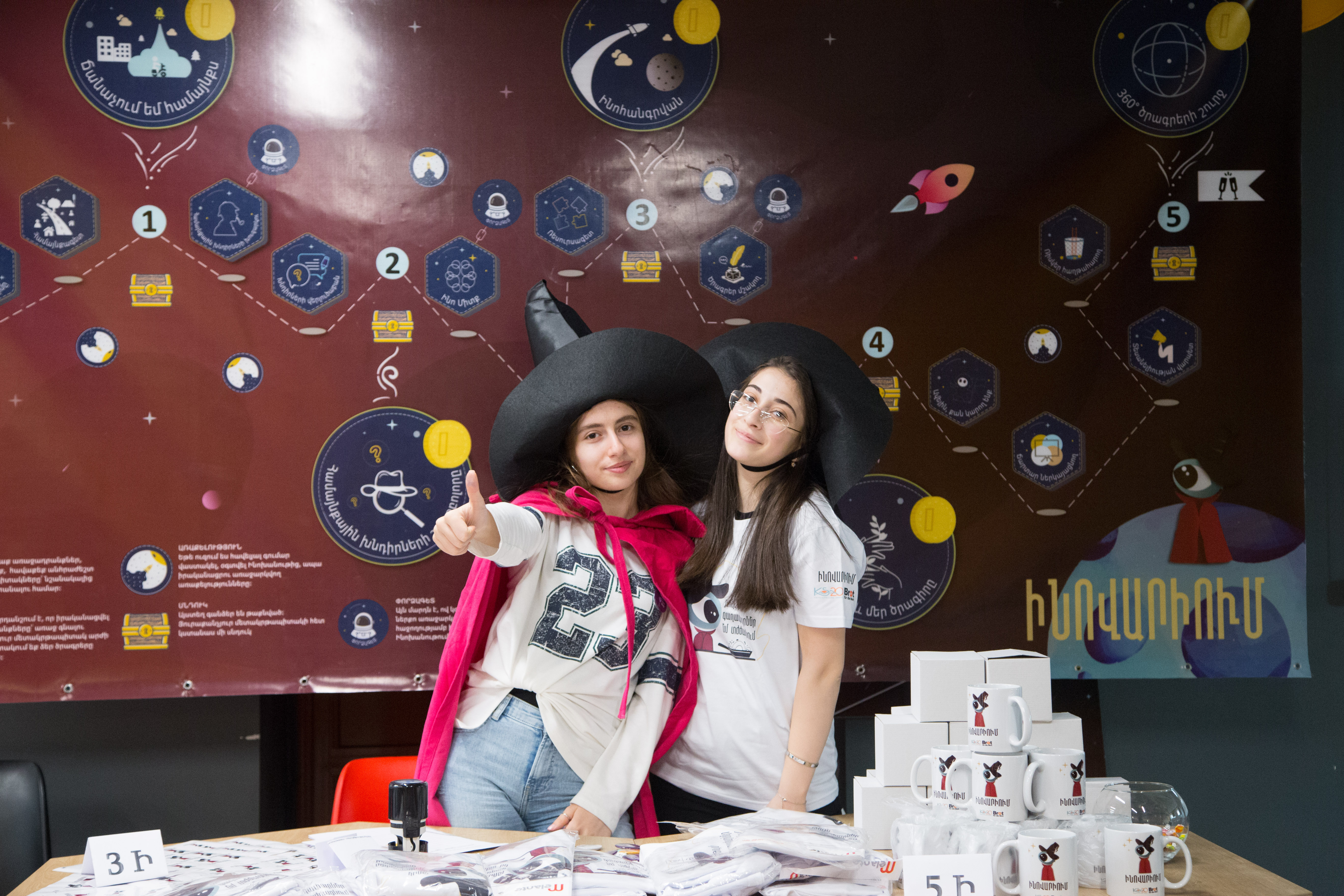Awero team
Open Badges gaming ignites real-world impact in Armenia’s communities
28 oct., 07:52
“We couldn’t say this young person gained five kilos of time management skills… but we knew they had grown.”
For Hermine Papipkyan and thousands of other youth workers across the globe, it’s an everyday challenge. How do you recognise something you can’t measure?
Hermine and her team at the KASA Foundation in Armenia first experimented with Open Badges and Cities of Learning in 2016, using these digital tools to recognise the skill development of junior facilitators in youth clubs across the country.
But it was in 2020, amidst the upheaval of COVID-19, that Hermine and the team reimagined how to keep youth work alive and relevant. “Everything had gone online. Young people were tired of screens. We had to find a new way to reach them,” she explains.
The solution? A gamified learning experience, built on the Cities of Learning platform and powered by Open Badges. And what began as an experiment, has grown into a viral national project connecting learning, recognition, and action in local communities.
Building skills, recognising growth, and driving change… with a game
Young people from across Armenia are invited to complete a five-level game, blending team-building, community engagement, project planning and delivery. Each level represents a stage in young people’s skill and competence development, with digital Open Badges marking their achievements.
“We created tasks for each level that young people would complete in their communities, like forming a team, identifying local needs, designing and delivering a youth-led initiative,” says Hermine.
By progressing through the levels, young people are empowered to develop their skills, know their communities and become change makers in their own right.
Each level ends with a meta badge, which not only recognises progress but also unlocks funding. “At the end, they can earn up to €250 to invest in a local youth project,” explains Hermine. “It’s recognition with real-world value.”

Motivation, recognition, and momentum
What makes this approach so successful is its blend of serious outcomes and playful process, together with allowing young people to create the projects important to them and the communities they inhabit. The use of badges adds structure and visibility to non-formal learning, while the game design keeps learners engaged.
“The logic of the game supports their development as junior facilitators, building teamwork, project planning, and community understanding step by step,” Hermine explains. “They’re not just learning; they’re doing.”
Since its launch, feedback has been overwhelmingly positive too. “We hesitated at first,” Hermine says. “Would young people join? But it went viral and now every time we open applications, we get 10–15 teams applying. It’s now a national project.”
The game is also responsive to current issues, something Hermine says is driven by young people themselves: “Each year, new themes emerge based on what young people care about, whether it’s environmental issues, infrastructure, or mental health. We see what matters most to them, and that helps us shape the programme.”
Real impact in real communities
The badges aren’t just symbolic either, leading to visible changes in local communities. “Some youth teams opened their own youth centres by negotiating with local authorities. Others set up libraries or ran environmental campaigns. One group created a card game about sustainability and now uses it in schools,” says Hermine.
The structure of the game also builds confidence and agency. “Young people learn how to assess community needs, plan activities, manage budgets, and reflect on their impact, all within a gamified structure that motivates them to keep going.”
Even large-scale challenges become entry points for creative action. “One team wanted to improve road infrastructure, something they couldn’t directly do. But we guided them to think about lobbying, raising awareness, or supporting change from another angle. That’s powerful learning.”

Lessons in playfulness and power
For organisations considering Open Badges or Cities of Learning, Hermine offers a key piece of advice: treat the tools seriously, but don’t take them too seriously.
“Yes, badges can represent meaningful competence development. But don’t overthink every word. Some of the most engaging tasks are designed in ten minutes,” she explains. “If you make it playful, learners will accept it in a playful way, and that leads to deeper learning.”
Initially, there was scepticism. “People would ask, ‘What can I do with a badge called Spider-Man?’,” Hermine remembers, reflecting on a badge the team created to represent networking skills. “So we learned to balance youth-friendly language with credibility. Over time, young people began to see badges as more than fun, they saw them as a way to talk about their growth.”
Today, even educators are adapting the approach. “Teachers started creating their own badges for the classroom, despite the fact that it’s not officially recognised by the national system. That tells you something about the appeal.”
A new culture of learning
What Hermine loves most is the curiosity Open Badges can ignite. “The Cities of Learning platform is full of playlists. I use them myself to grow different competences, just for fun. The openness of it invites exploration.”
And for young people across Armenia, that spark is turning into something much bigger. From personal growth to civic impact, this playful but purposeful approach is creating a new culture of learning, where recognition is earned, shared, and celebrated.

Funded by the European Union. Views and opinions expressed are however those of the author(s) only and do not necessarily reflect those of the European Union or the European Education and Culture Executive Agency (EACEA). Neither the European Union nor EACEA can be held responsible for them.
Share:
